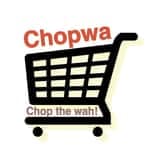
AI and Food Safety Technology
Ensuring Safe Food with AI or how Technology is Transforming Food Safety
What is safe food?
Safe food refers to food that is free from harmful contaminants, pathogens, and toxins, ensuring it is fit for consumption without posing health risks to individuals. Safe food practices involve various measures from production and processing to storage and preparation. Key aspects of safe food include:
Hygiene: Ensuring that food is handled with clean hands, utensils, and surfaces to prevent contamination.
Cooking: Cooking food to the appropriate temperatures to kill harmful bacteria and pathogens. For example, poultry should generally be cooked to an internal temperature of 165°F (74°C).
Storage: Keeping food at safe temperatures, either hot (above 140°F or 60°C) or cold (below 40°F or 4°C), to inhibit the growth of harmful microorganisms.
Cross-Contamination Prevention: Avoiding the transfer of harmful bacteria from one food item to another, especially between raw and cooked foods.
Proper Food Sourcing: Utilizing safe and reliable sources for food products to minimize the risk of contamination.
Expiration Dates: Paying attention to expiration and use by dates to ensure that food is consumed while still safe to eat.
Awareness of Allergens: Being informed about food allergies and cross-contact to prevent allergic reactions.
By following safe food handling practices, individuals can reduce the risk of foodborne illnesses and ensure that the food they consume is safe.
Ensuring Safe Food with AI
Ensuring the safety of the food we eat is critical for both public health and the success of the food industry. With the rise of new technologies, including artificial intelligence (AI), we are seeing exciting new ways to improve food safety and protect consumers from foodborne illnesses.
One of the ways AI is being used in food safety is through predictive analytics. By analyzing data on foodborne illness outbreaks, AI can predict and identify potential sources of contamination, allowing for quicker and more targeted responses to potential outbreaks. AI can also be used to analyze food quality data in real-time, allowing manufacturers to quickly identify and address potential issues before they become more serious.
Another way AI is being used in food safety is through blockchain technology. By using blockchain to track and trace food products from farm to table, manufacturers can quickly identify potential contamination points and remove affected products from the market. Blockchain can also be used to verify the authenticity of food products, ensuring that consumers are getting what they paid for and reducing the risk of fraud.
AI is also being used in food safety through the development of smart sensors and detection technologies. These technologies can quickly and accurately identify potential contaminants in food products, reducing the risk of foodborne illness and allowing for quicker responses to potential outbreaks.
Additionally, AI is being used to improve food safety training and education. By using AI-powered training platforms, food industry workers can receive personalized training on food safety best practices, helping to reduce the risk of contamination and improve overall food safety.
AI is transforming the way we approach food safety, providing new opportunities for growth and innovation in the food industry. By leveraging AI-powered technologies, we can improve efficiency, accuracy, and safety in every aspect of the food industry, from production and manufacturing to distribution and consumption. As AI continues to develop and evolve, it is likely that we will see even more exciting uses of this technology in food safety and beyond.
Table summarizing how AI is being used in food safety
| AI Application | Description |
| Predictive Analytics | Uses AI to analyze data on foodborne illness outbreaks and predict potential sources of contamination, allowing for quicker responses to potential outbreaks. AI can also be used to analyze food quality data in real-time, allowing manufacturers to quickly identify and address potential issues. |
| Blockchain | Uses blockchain technology to track and trace food products from farm to table, quickly identifying potential contamination points and removing affected products from the market. Blockchain can also be used to verify the authenticity of food products, reducing the risk of fraud. |
| Smart Sensors and Detection Technologies | Uses AI-powered sensors and detection technologies to quickly and accurately identify potential contaminants in food products, reducing the risk of foodborne illness and allowing for quicker responses to potential outbreaks. |
| Food Label Analysis | Uses natural language processing (NLP) technology to analyze food labels and ingredient lists, allowing consumers to quickly and easily identify potential allergens and unhealthy additives in the products they purchase. |
| Ingredient Analysis | Uses AI-powered analytics to identify alternative ingredients and formulations that are more nutritious, sustainable, and free of potential allergens or unhealthy additives. |
These AI-powered technologies are helping to improve food safety and promote healthier and more sustainable food systems. By leveraging AI, we can improve efficiency, accuracy, and safety in every aspect of the food industry, from production and manufacturing to distribution and consumption.
Online resources for Technology Transforming Food Safety
Certainly! There are numerous online resources that focus on the intersection of technology and food safety. Here are some notable ones:
Websites & Organizations
U.S. Food and Drug Administration (FDA)
- Website: FDA.gov
- Offers resources related to food safety, including guidelines and innovations in food technology.
Food Safety and Inspection Service (FSIS)
- Website: FSIS.usda.gov
- The USDA’s FSIS provides information on food safety standards and practices, including technology advancements.
World Health Organization (WHO)
- Website: WHO.int
- WHO provides global guidelines on food safety, which include technological solutions for improving safety.
Institute of Food Technologists (IFT)
- Website: IFT.org
- A professional organization that provides resources on food science and technology, including papers and articles on the latest innovations.
The Food Safety Authority of Ireland (FSAI)
- Website: FSAI.ie
- Offers reports, guidelines, and resources related to food safety, including the use of technology.
Journals & Publications
Journal of Food Protection
- A peer-reviewed journal that publishes research articles on food safety, including discussions on emerging technologies.
Food Control
- An international journal that focuses on the control and safety of food and beverages, often highlighting technology in food safety.
Food Safety Magazine
- Website: FoodSafety.com
- A magazine featuring articles on contemporary issues in food safety, including technological advancements.
Online Courses & Webinars
Coursera & edX
- Platforms like Coursera and edX offer courses on food safety that often include sections on technology and innovations in the field.
Food Safety Training by the FDA
- The FDA offers various online training resources that discuss technology’s role in food safety.
Webinars by Organizations Like IFT and FSIS
- Regular webinars discussing food safety innovations and technologies are often hosted by organizations like IFT and FSIS.
Blogs and News
Food Safety News
- Website: FoodSafetyNews.com
- Provides news articles on the latest trends and technologies in food safety.
The Food Safety Tech Blog
- Offers insights into how technology is being used to enhance food safety practices.
Industry Reports
Reports by Market Research Firms
- Firms like Mordor Intelligence and Grand View Research often publish reports on technological advancements in food safety.
The Food Marketing Institute (FMI)
- Website: FMI.org
- Publishes reports that often encompass food safety and technology.
Social Media & Forums
LinkedIn Groups
- Join groups focused on food safety and technology to engage with professionals in the field.
Reddit (r/FoodSafety)
- A forum for discussions about food safety regulations, technology, and best practices.
By exploring these resources, you can gain valuable insights into how technology is transforming food safety, including innovations in monitoring, processing, and compliance.
Shop tip
Technology and Food Safety On Amazon
Thank you for reading, comments and shares!
Crafted with chatGPT Language Models and Picsart
Create your own website
And learn how to monetize it
Heads up! If you’re looking to join Wealthy Affiliate, make sure you sign up using my referral link to get access to my personal coaching and all WA features."







